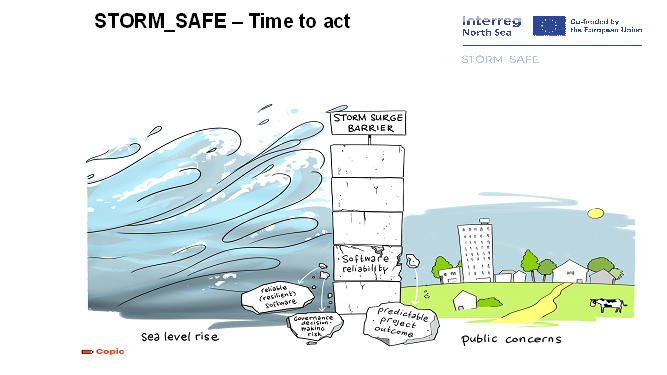About Rijkswaterstaat
Rijkswaterstaat is responsible for flood safety in the Netherlands. This includes the maintenance and operation of the country’s movable storm surge barriers. These barriers are complex, safety-critical systems with a low frequency of use, yet they play a vital role in protecting the hinterland from flooding. Control systems are a crucial part of their architecture, ensuring that the barriers can be operated in a safe and reliable manner. The traditional approach to replacing or redesigning embedded control systems is time-consuming. Moreover, the predictability of project outcomes and the reliability of delivered software need to better align with the challenges and requirements faced by Rijkswaterstaat.
About the case study
The aim of the case study is to explore how control systems for storm surge barriers can be developed with demonstrable software reliability, predictable project execution, and realistic budgets and timelines. The approach focuses on improving the reliability, traceability, and scalability of control software.

Rijkswaterstaat is investigating innovative methods to achieve this, specifically through the use of formal methods in the development of control systems. The case study aims to assess the practical application of these methods, their added value, and the conditions needed for successful implementation in real-world infrastructure projects.
Key requirements for the software include:
- High reliability, as measured by TOPAAS, without the possibility of testing on the physical barrier.
- Predictable development timelines, minimizing late-stage error detection and delays.
- Hardware-independent, mathematically precise specifications, which are crucial for migration to future hardware platforms.
Contribution to STORM_SAFE
Transnational cooperation enhances territorial resilience by enabling joint pilots, knowledge exchange, and EU-wide strategies. Rijkswaterstaat contributes a validated approach for reliable control software in storm surge barriers and explores broader applications of formal methods.
